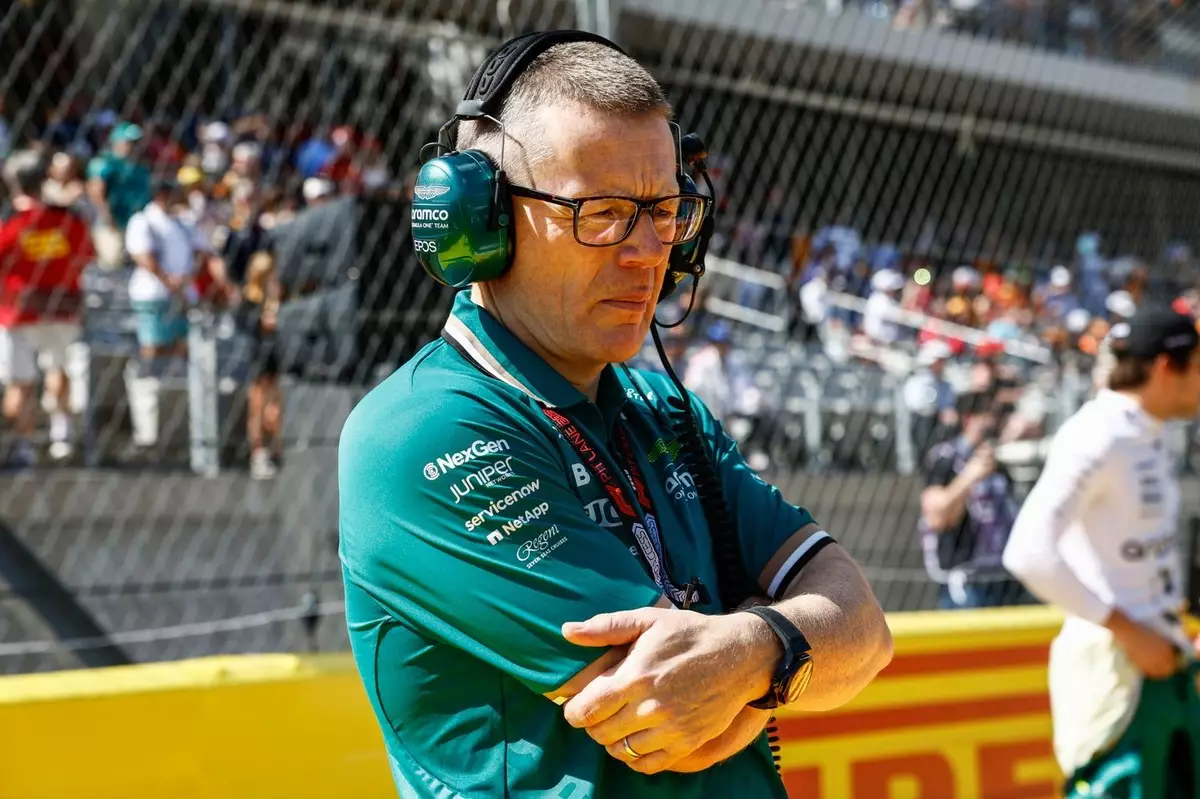Aston Martin, a name synonymous with luxury and performance, is undoubtedly making waves this new year as they enact significant changes within their team management structure. This decision to appoint Andy Cowell as the new team principal marks a pivotal moment for the organization, particularly as it continues to forge its path in the competitive world of Formula 1. Replacing Mike Krack, who has been reassigned to the role of chief trackside officer after nearly three years, this management transformation speaks volumes about Aston Martin’s ambitions and strategic adjustments going forward.
The restructuring within Aston Martin indicates a robust commitment to improving race car performance, a crucial factor in the high-stakes arena of Formula 1 racing. Cowell, who previously helmed Mercedes High Performance Powertrains, steps into this newly merged role at a time when the nuances of aerodynamics, engineering, and performance are more critical than ever. As the statement from the team outlines, a clear segregational approach has been implemented, whereby the Aerodynamics, Engineering, and Performance Departments will now operate as dedicated entities — both trackside and from the AMR Technology Campus. This separation, overseen by Cowell, suggests a tactical shift designed to bring focused innovation to race preparation and car development.
The ambition to enhance car performance is underpinned by the expectation that these distinct subdivisions will devote their full attention to addressing the intricate challenges associated with race car creation. Such reorganization implies that Aston Martin is not merely looking to compete; they aim to excel and ultimately secure victories at the highest levels.
Integral to this new strategy is Enrico Cardile, who will assume the role of chief technical officer upon the completion of his gardening leave from Ferrari. His arrival represents a significant coup, bringing an experienced perspective to the team. Aston Martin’s announcement emphasizes Cardile’s responsibility in directing the architecture, design, and construction of new race cars, a role vital for fostering innovation and ensuring the competitiveness of the vehicles on the track. This strategic hiring reflects a broader trend within the racing landscape, where teams are continuously seeking out top-tier talent to cultivate a successful framework.
Adrian Newey also maintains his title as ‘managing technical partner’, albeit with a flexible involvement that underscores the individualized approach to leadership in high-performance environments. Newey’s selective engagement highlights a model where talent is utilized optimally, allowing team engineers and designers to operate without the constraints of a rigid schedule.
However, such rapid restructuring raises questions regarding the roles of those left in the wake of these changes. The future of performance director Tom McCullough remains ambiguous following the shift to Cowell’s leadership. Previously integral to maximizing car performance, McCullough now faces a new landscape where his established track-side duties have been transformed. While his experience and long tenure with the team enhance its foundation, the true extent of his role in the upcoming competitions remains to be clarified.
Cowell himself has expressed profound admiration for the team’s dedication and effort during his initial three months in charge, voicing optimism about their journey ahead. With looming transitions, particularly the upcoming full works team integration in 2026 alongside strategic partners Honda and Aramco, this is a critical juncture for Aston Martin.
As the team galvanizes its resources and recalibrates its strategies amidst these organizational changes, the overarching goal of becoming a championship-winning entity is firmly within sight. The insistence on a focused approach to engineering excellence and performance will likely position Aston Martin favorably in the competitive grid of Formula 1.
This new era at Aston Martin is indicative of the high stakes involved in contemporary motorsport, where leadership decisions can profoundly influence competitive advantage. As 2024 unfolds, the fervor surrounding Aston Martin’s strategic pivots serves as a reminder of the relentless pursuit of excellence inherent in racing culture. Whether these changes yield success on the track remains to be seen but what is undeniable is the growth and evolution of one of the sport’s storied names.


Napsat komentář